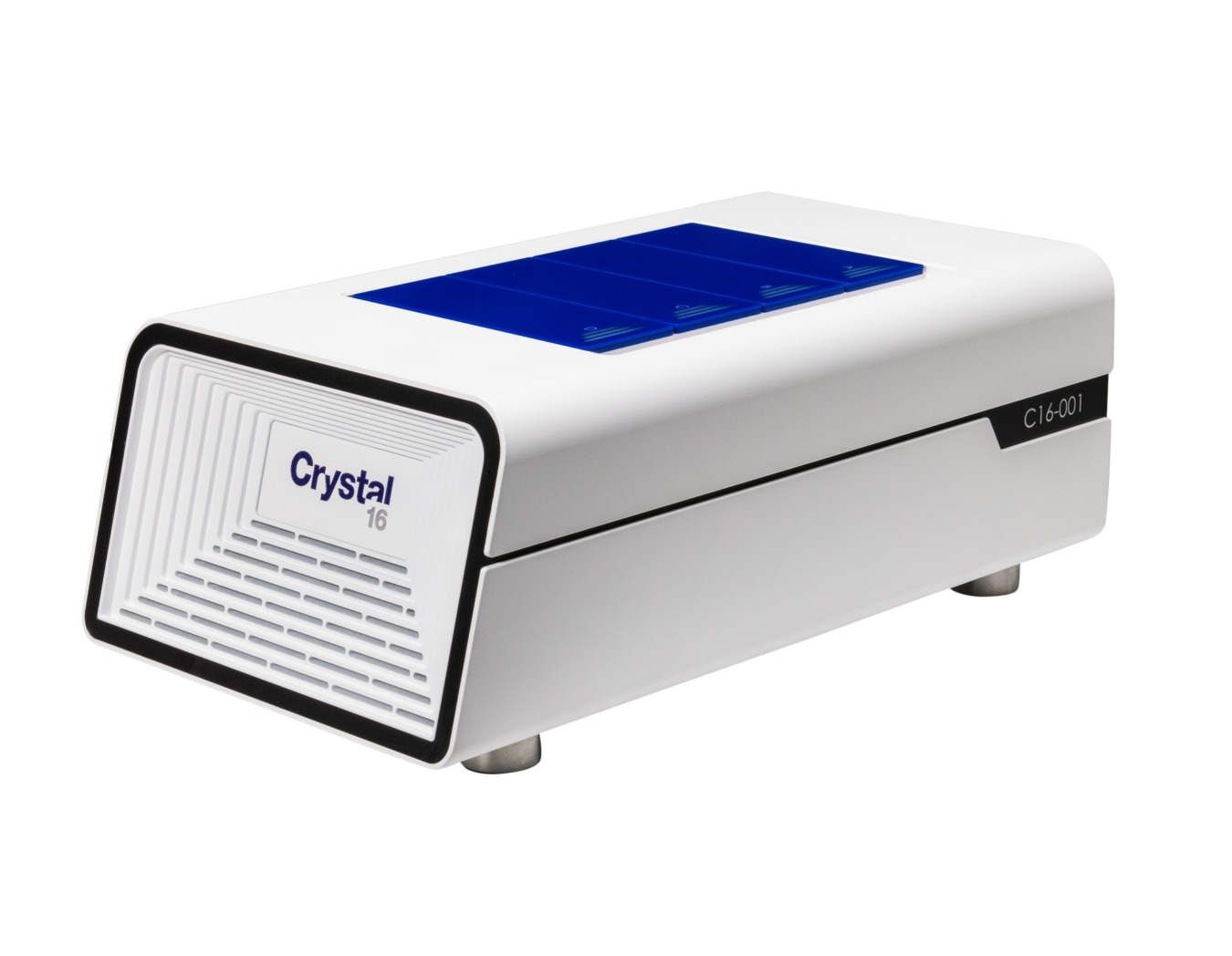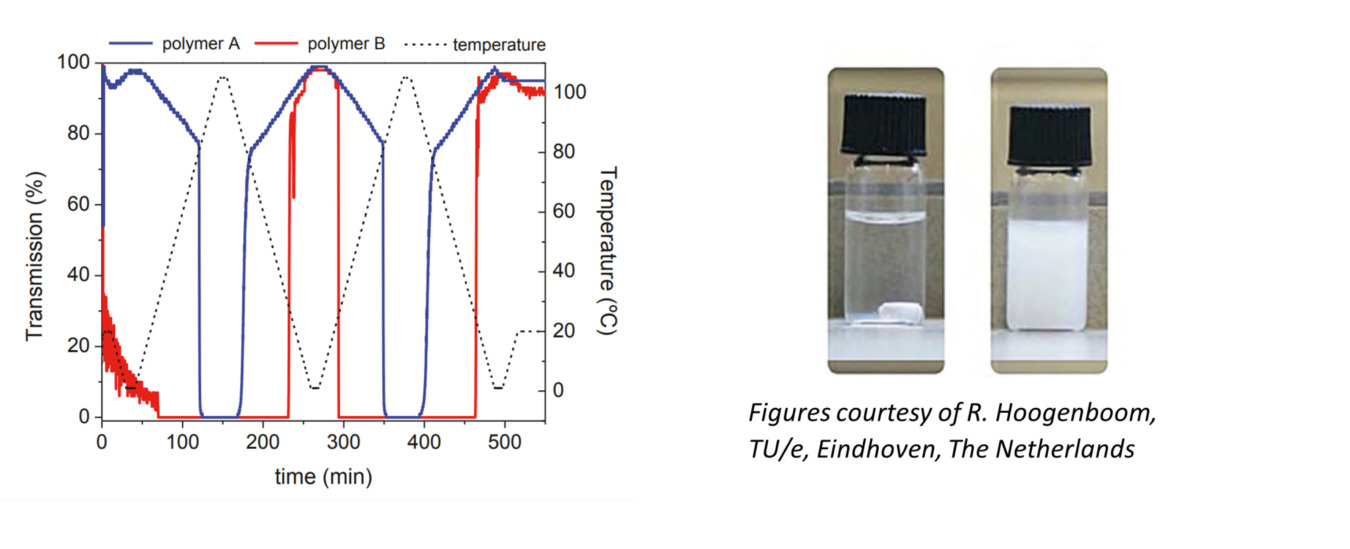Introduction
Polymers can display complex temperature-dependent behaviour in solution. Some polymers behave similarly to most classical small molecules, showing an upper critical solution temperature (UCST), i.e., dissolution and the formation of a single phase on heating.
However, some of the more interesting macromolecules exhibit the inverse behaviour, i.e., their solubility decreases with an increase in temperature at precipitation temperature (Tp) and shows phase separation above a lower critical solution temperature (LCST).
These Phenomena can be captured using the Crystal16.

Solubility Determination of Polymers
Crystal16 measures transmissivity and controls temperature for 16 reactors (1 ml HPLC vials) at once, and is invaluable when studying the thermoresponsive polymer behaviour in different solvents and binary solvent mixtures.
Completely soluble (co)polymers show transmission between 100-85%, during temperature cycling, indicating that the solutions remain clear, irrespective of temperature. Polymers which are completely insoluble over the whole temperature range, will result in scattered transmission curves, due to the small particles floating in the vial. A polymer which does not dissolve in the investigated temperature range, but which changes into a homogeneous dispersion, will initially show a scattered transmission curve, dropping to 0% transmission.
LCST and UCST behavior
The LCST (Lower Critical Solution Temperature) is the point where precipitation upon heating occurs based on the hydrophilicity-hydrophobicity balance of a (co)polymer and can be determined by LCST can be determined for both heating and cooling at 50% transmission.
The UCST (Upper Critical Solution Temperature): the polymer is insoluble at low temperatures and becomes more soluble at higher temperatures, in temperature cycling experiments the transmission drops during the cooling step. From this solubility plot the precipitation temperature (Tp) can be determined at 50% transmission.

Dispersion and Micellar formation
Dispersion stability can be studied by following the transmission profiles as a function of temperature. Transmission profiles showing undissolved scattering particles are first dispersed upon heating (low transmission). Upon further heating the transmission increases, to 70%, where it stabilizes. The solutions often have a blue hue which is indicative of formation of micelles.
Curious to learn more?
Read the full scale experiment in the application note "Crystal16 for Polymer Applications"